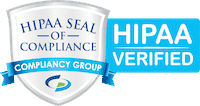Riverside, CA: A Look at the Future of Claims Management Software in 2024
July 25, 2024
In the intricate landscape of healthcare, efficient claims management plays a pivotal role in ensuring smooth operations and optimal patient care. Third-party administrators (TPAs) are instrumental in facilitating this process by handling claims for healthcare providers, insurers, and employers. However, traditional methods of claims management often suffer from inefficiencies, delays, and inaccuracies. Enter TPA software – a revolutionary solution poised to transform claims management in healthcare. In this blog post, we’ll explore five key ways TPA software can revolutionize claims management, enhancing efficiency, accuracy, and effectiveness in the healthcare ecosystem.
Streamlining Workflow Processes
One of the primary advantages of TPA software lies in its ability to streamline workflow processes. Traditional claims management systems often involve manual data entry, paper-based documentation, and fragmented communication channels. TPA software automates these processes, allowing for seamless integration of data across various stakeholders. With features such as electronic claim submissions, automated adjudication, and real-time status updates, TPA software accelerates the claims processing cycle, reducing administrative burden and enhancing productivity.
Enhancing Data Accuracy and Compliance
Accuracy and compliance are paramount in healthcare claims management, where errors can have significant financial and regulatory implications. TPA software leverages advanced algorithms and data validation techniques to ensure the accuracy of claims data, minimizing the risk of errors and discrepancies. Moreover, TPA software is designed to adhere to stringent regulatory requirements, such as HIPAA (Health Insurance Portability and Accountability Act) compliance, ensuring the confidentiality and security of sensitive patient information. By enhancing data accuracy and compliance, TPA software helps mitigate risks and safeguard the integrity of the claims management process.
Improving Transparency and Visibility
Transparency and visibility are essential for effective claims management, enabling stakeholders to track the progress of claims, identify bottlenecks, and make informed decisions. TPA software offers robust reporting and analytics capabilities, providing stakeholders with real-time insights into claim status, performance metrics, and trends. Through intuitive dashboards and customizable reports, healthcare providers, insurers, and employers can gain a comprehensive understanding of their claims portfolio, enabling proactive management and strategic planning. TPA software fosters collaboration and accountability across the healthcare ecosystem by improving transparency and visibility.
Facilitating Seamless Integration and Interoperability
Interoperability is a key challenge in healthcare IT, where disparate systems often hinder the seamless exchange of data and information. TPA software addresses this challenge by facilitating seamless integration with existing healthcare systems, including electronic health record (EHR) platforms, practice management systems, and payer portals. Through standardized interfaces and APIs (Application Programming Interfaces), TPA software enables interoperability, allowing for the seamless exchange of data and information across different platforms. This integration streamlines workflows, reduces duplication of effort, and enhances data accuracy, ultimately improving the efficiency and effectiveness of claims management.
Empowering Decision-Making with Predictive Analytics
In today’s data-driven healthcare landscape, predictive analytics is emerging as a powerful tool for informed decision-making. TPA software harnesses the power of predictive analytics to identify patterns, trends, and anomalies in claims data, enabling stakeholders to anticipate future outcomes and proactively mitigate risks. By leveraging machine learning algorithms and predictive models, TPA software can predict claim denials, fraudulent activities, and cost trends, empowering stakeholders to take timely actions and optimize resource allocation. With predictive analytics, TPA software transforms claims management from a reactive process to a proactive strategy, driving better outcomes and cost savings for healthcare organizations.
Conclusion
TPA software holds immense potential to revolutionize claims management in healthcare, offering a comprehensive solution to streamline processes, enhance accuracy, and drive strategic insights. By leveraging advanced technologies such as automation, data analytics, and interoperability, TPA software empowers stakeholders to optimize efficiency, improve outcomes, and deliver superior patient care. As healthcare continues to evolve, TPA software will play a pivotal role in shaping the future of claims management and driving innovation and excellence across the industry.
7 Features Every Online Claim Management System Needs
June 27, 2024What to Look for in Claims Management Software?
May 8, 2024









